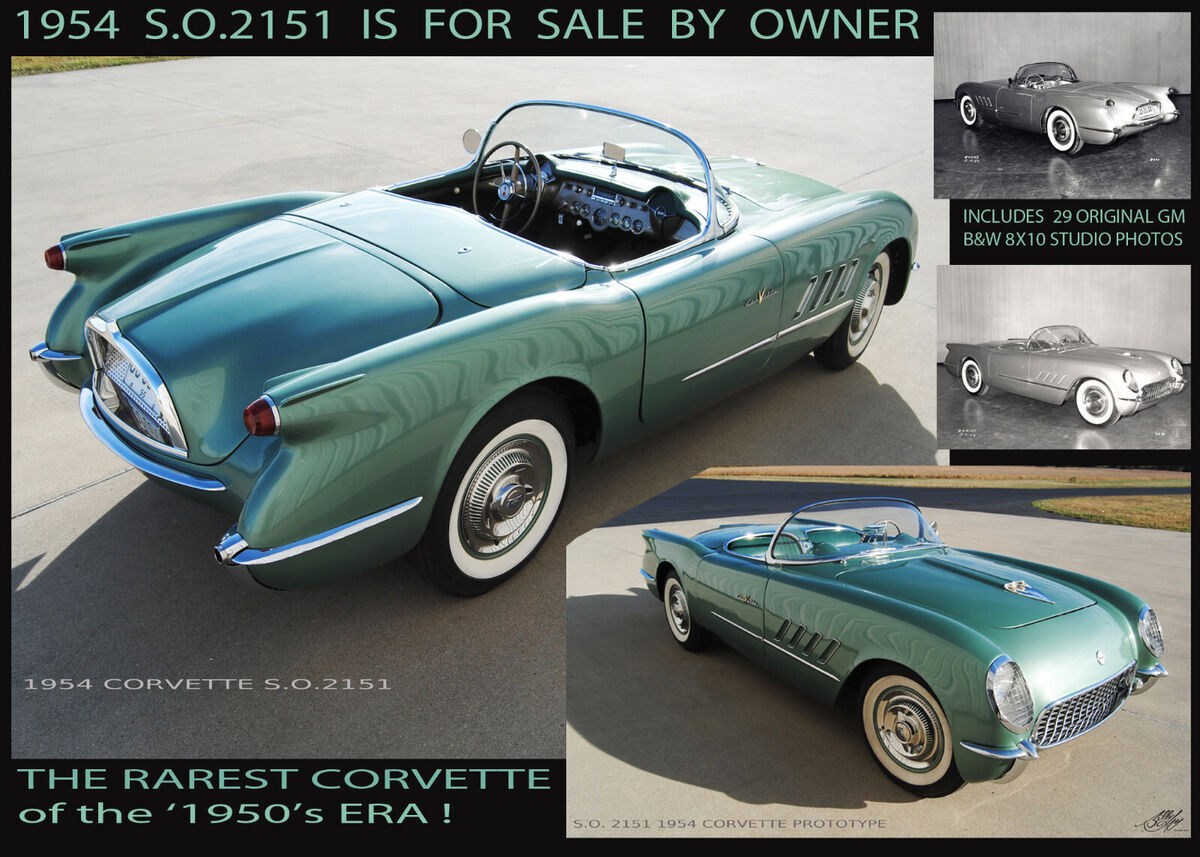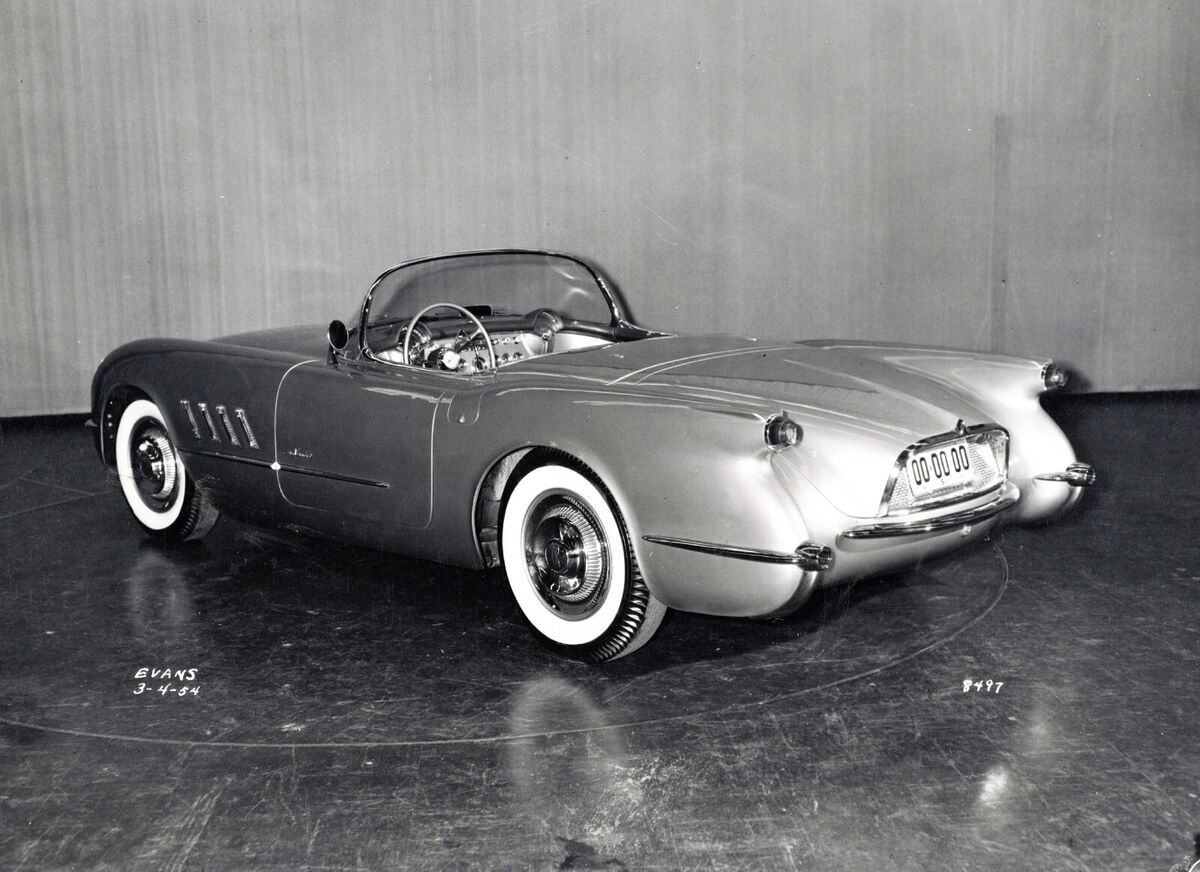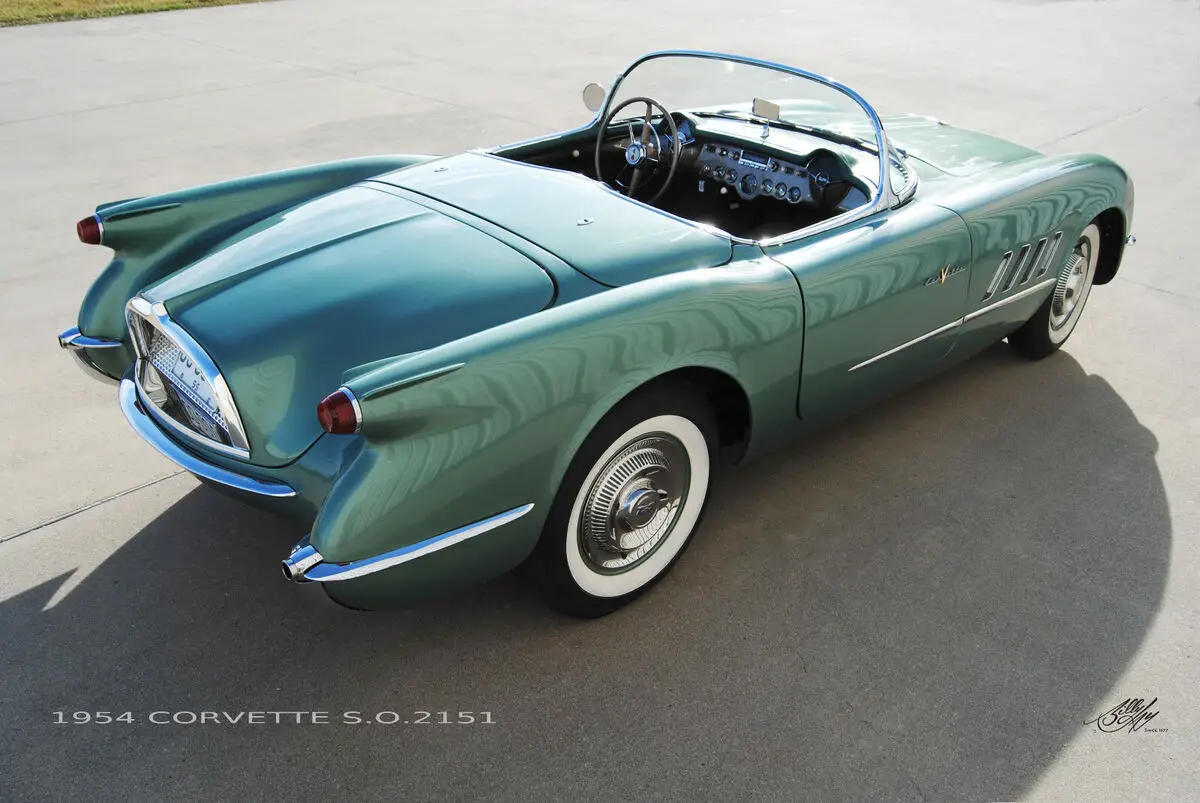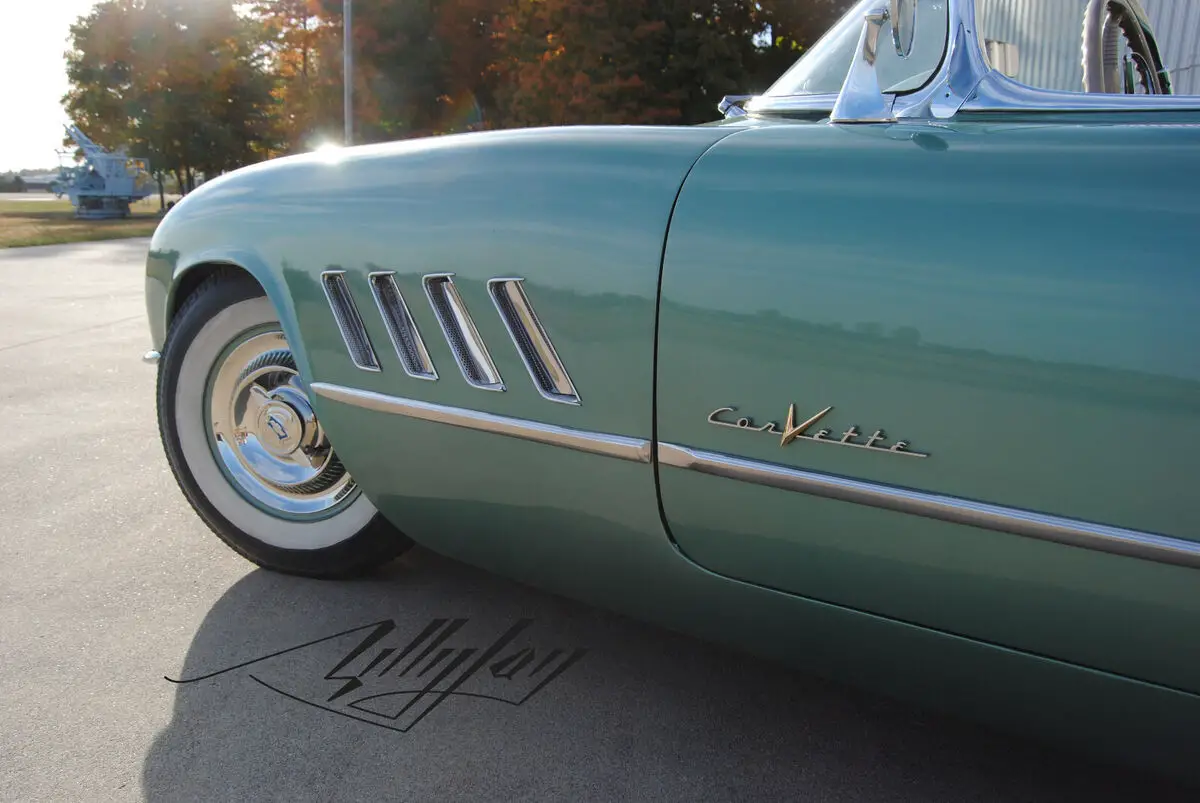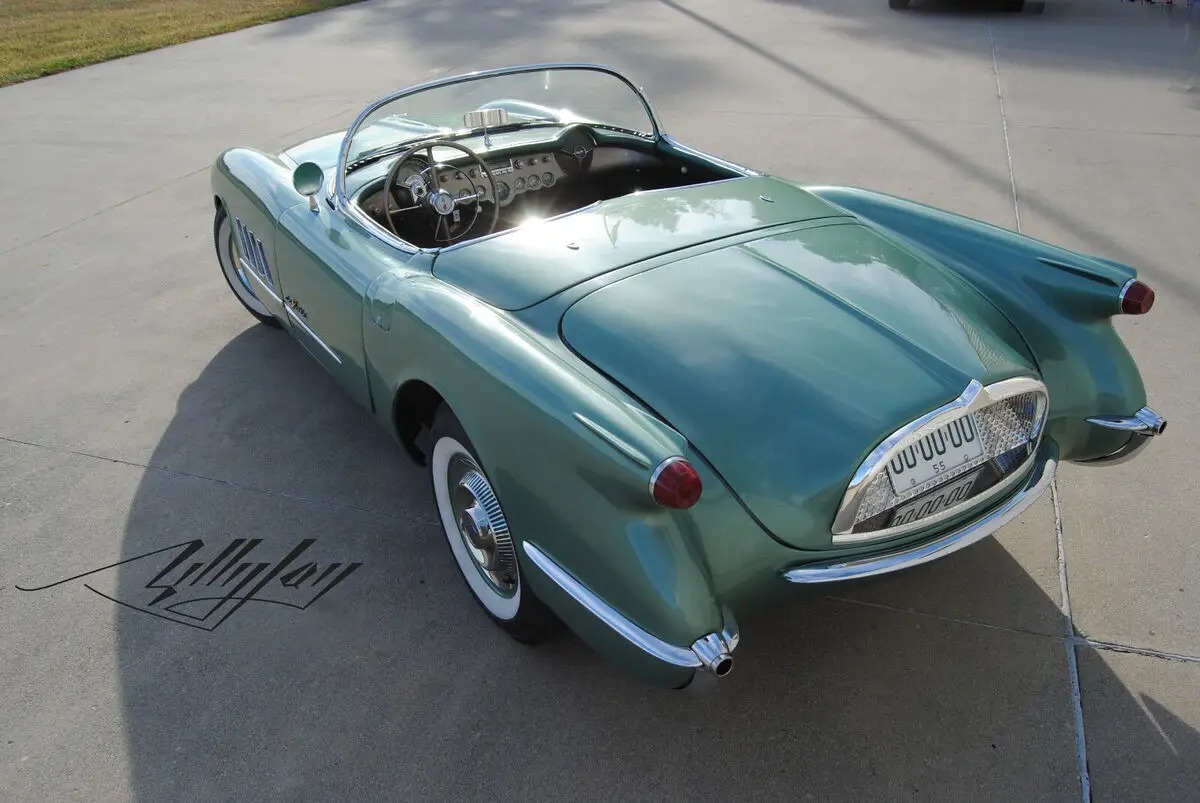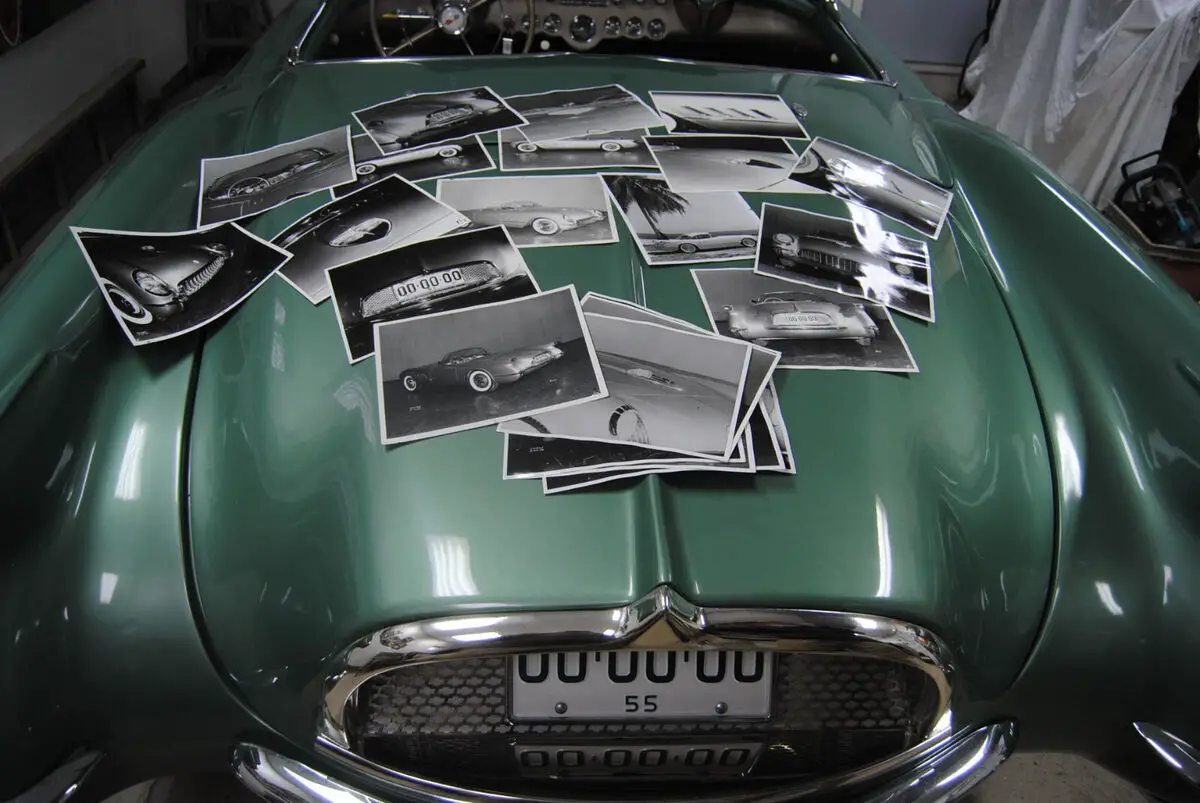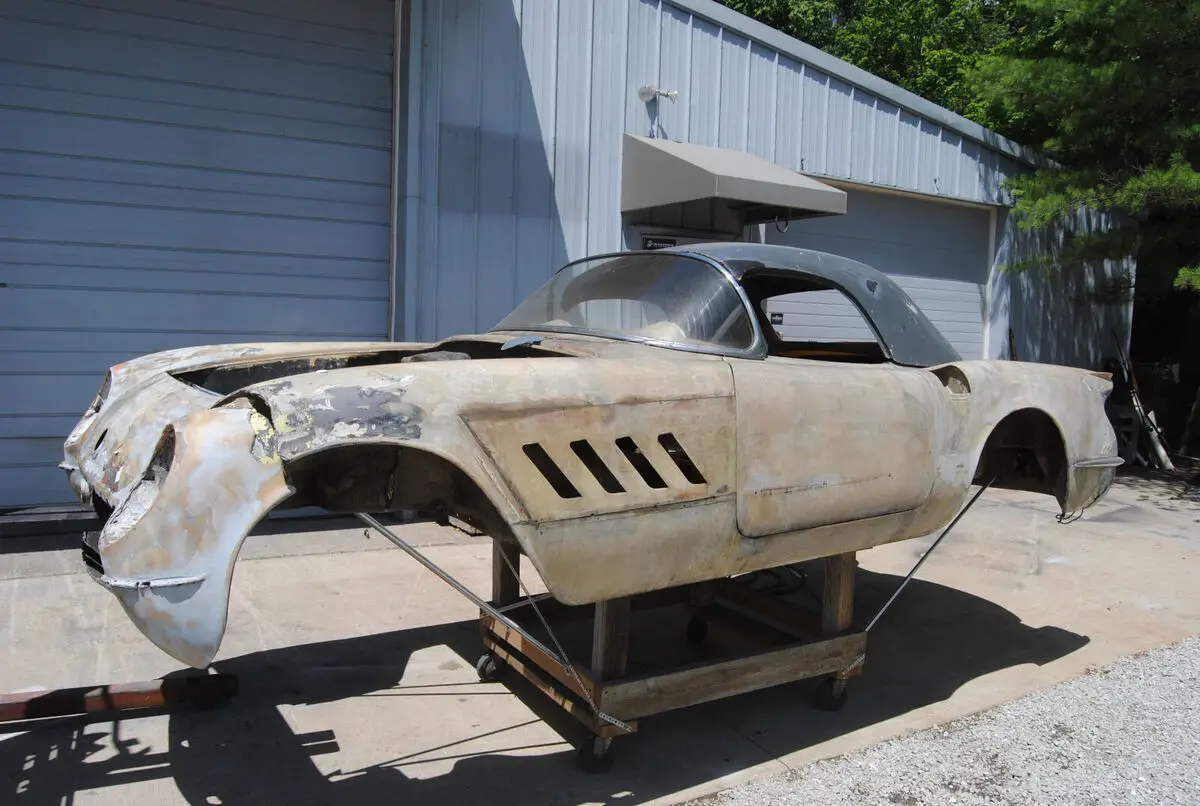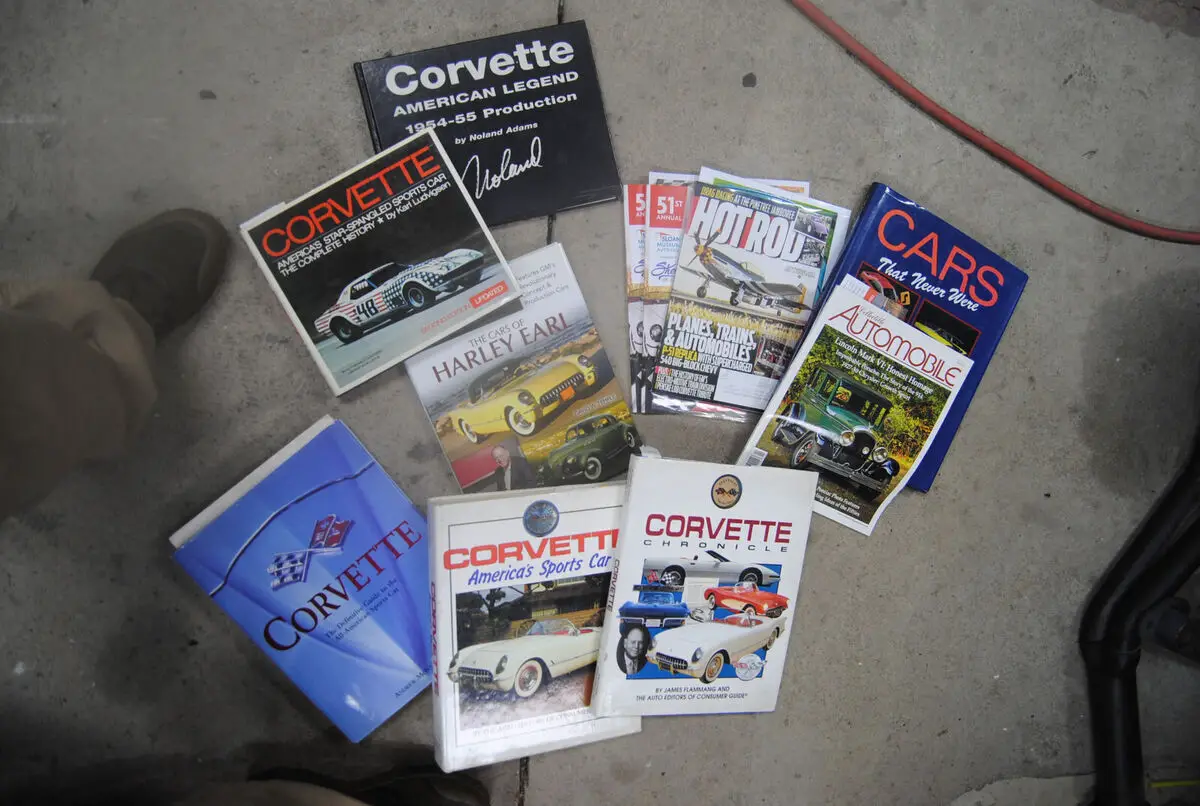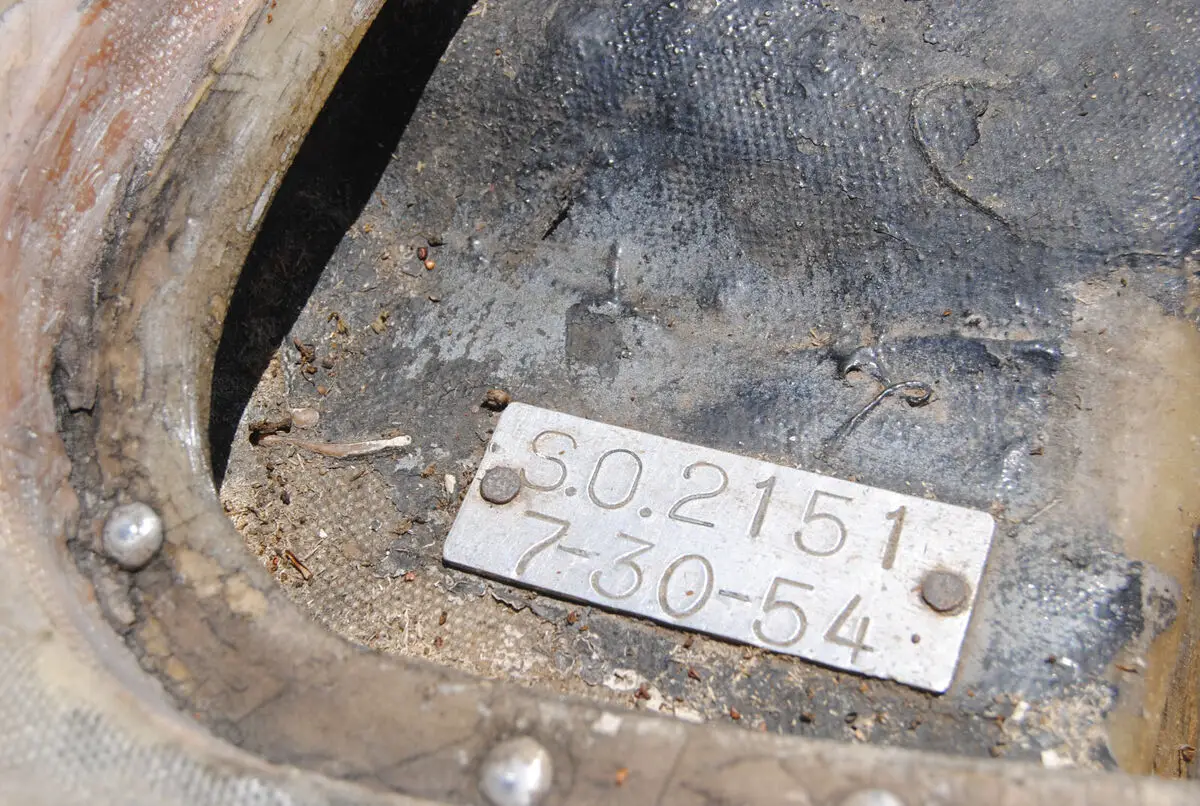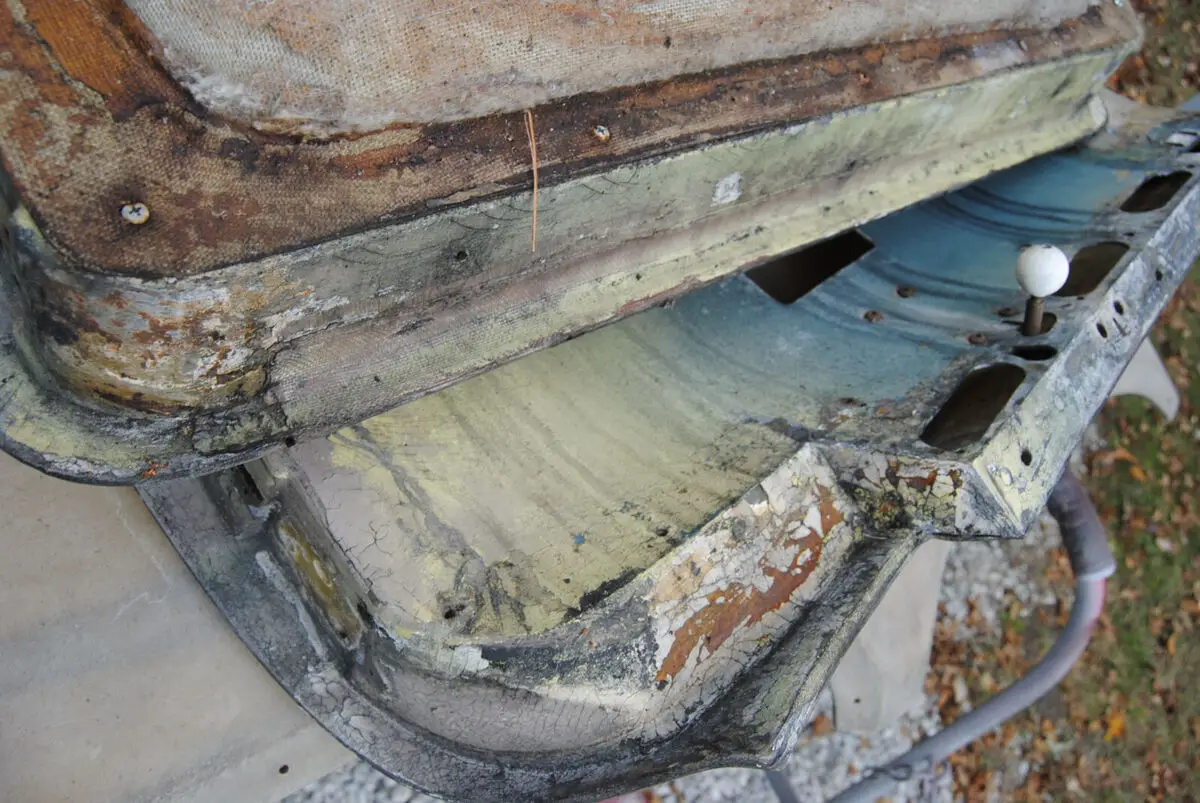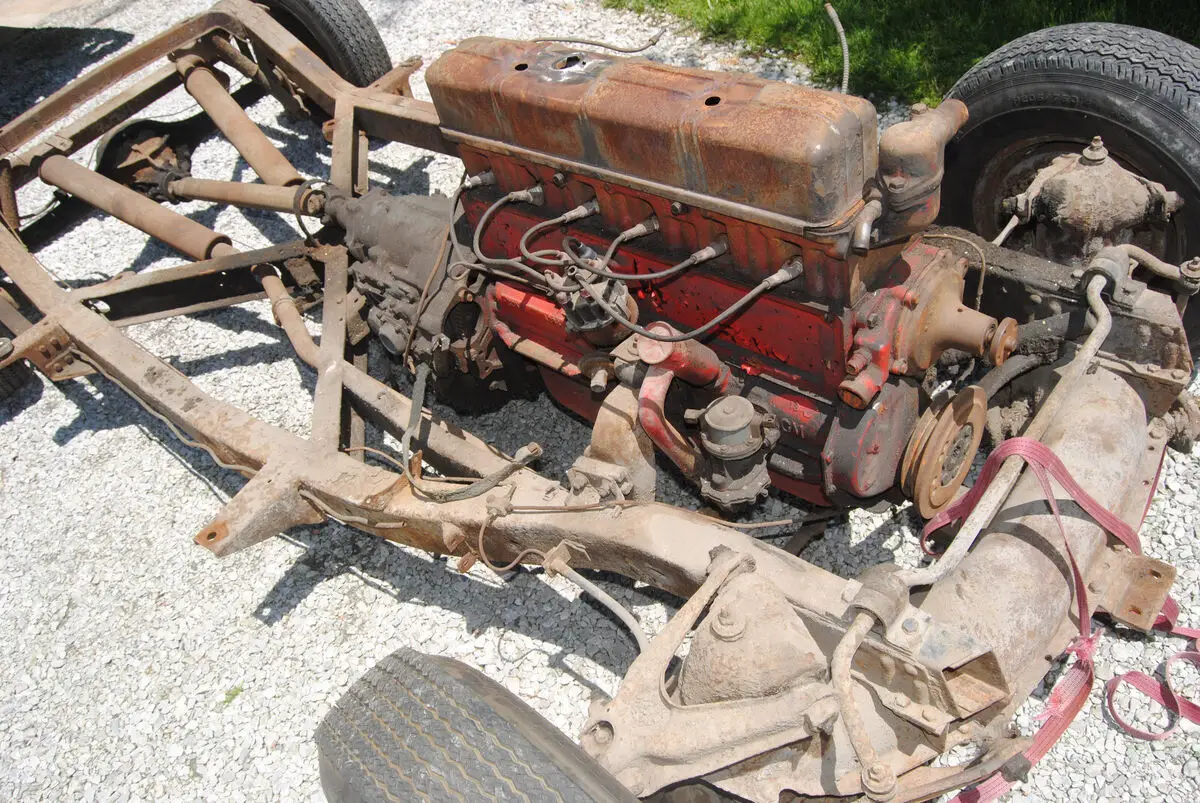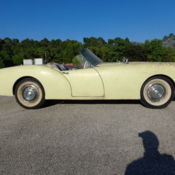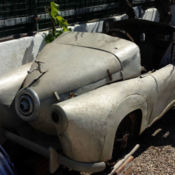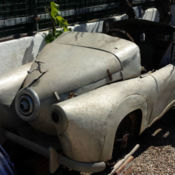1954 Corvette Prototype S.O.2151
1954 Chevrolet Corvette
1954 CHEVROLET CORVETTE S.O. 2151 PROTOTYPE
CHASSIS NO. E54S002092
ENGINE NO. 0492253 F54YG
YouTube videos (7) search 1954 Corvette S.O.2151 by "coltin espich" profile
HIGHLIGHTS
A Significant, One-of-a-Kind Piece of Corvette History
GM Styling Department’s “Proposal Car” for the 1955 Corvette
Painstaking Restoration to Original 1954 Appearance and Specification
Recipient of The Founders Award at The Amelia in March 2023
Rare Surviving Example of a Motorama-Era Harley Earl Dream Car
SPECIFICATIONS
235 CID OHV Inline 6-Cylinder Engine
Three Carter Sidedraft Carburetors
155 BHP at 4,200 RPM
2-Speed Powerglide Automatic Transmission
4-Wheel Hydraulic Drum Brakes
Front Independent Coil-Spring Suspension
Rear Live Axle with Semi-Elliptical Leaf Springs
PROVENANCE
Auto Center, San Jose, California (acquired by 1963)
Richard Oldham, Novato, California (acquired from the above in 1974)
George F. Campbell, Corvallis, Oregon (acquired from the above in 1975)
Current Owner (acquired in 2018)
EXHIBITION HIGHLIGHTS
The Amelia Concours d’Elegance, 2023 (The Founders Award)
Displayed at the Sloan GM Museum June,2023
Gooding & Co. Pebble Beach, CA. August, 2023
FEATURED MEDIA
The Cars of Harley Earl, by David W. Temple
Corvette – America’s Star-Spangled Sports Car, by Karl Ludvigsen
Corvette American Legend Vol. 1: The Beginning, by Noland Adams
Corvette American Legend Vol. 2: 1954–1955 Production, by Noland Adams
Corvette Chronicle, by James Flammang
Hot Rod, October 2022, “Stunning Proposition”
Cars that never were. by Consumer Guide pg.62
Motor Trend.com Early Corvette Prototype not seen since 1954
Hagerty.com 1954 Corvette Prototype: A Euro flair design that never was
billyjayindycustom.com 1954 S.O.2151 History / 1954 S.O.2151 Gallery
Seven YouTube Videos: 1954 Corvette Prototype S.O.2151
This one-of-a-kind “Proposal Car” is an integral part of the Corvette story, with a fascinating history that dates to early 1953 – well before the first production models rolled off the assembly line in Flint, Michigan.
Prior to series Corvette production, which commenced on June 30, 1953, Chevrolet built approximately 15 handlaid fiberglass bodies intended for experimental or Motorama use. These hand-built show cars were not assigned standard VIN numbers but were instead referred to by internal codes. One such example was EX-52, the first Corvette prototype unveiled to the public at New York’s Waldorf Astoria Hotel in January 1953. Other famous Corvette-based show cars are referred to by their Shop Order “S.O.” numbers like the Corvair (S.O. 2071), the Nomad (S.O. 1954), and the Hardtop (S.O. 2000), which were stars of the 1954 Motorama. As documented in internal General Motors memos, many of these show cars were dismantled, destroyed, or reused for other projects. Several examples were modified, repainted, and repurposed for further promotional duties. As a result, precious few of these Motorama-era prototypes survive today.
The history of this car originates with S.O. 2000, the pale-yellow Hardtop prototype that debuted in early 1953. According to various accounts, at least two of these show cars were built and it is believed that one was retired early so its body could be reassigned to a new project – S.O. 2151 January 1954.
This body was returned to GM’s famous Art and Colour department, and overseen by legendary designer Harley Earl. In its new role, S.O. 2151 served as the department’s Proposal Car for 1955 – a prototype built for GM management to review and determine the look of next year’s Corvette.
During this process, the Corvette body was restyled to incorporate several notable new features: a decorative hood scoop, eggcrate front grille, bumper-exit exhaust tips, and a distinctive trunk design, like the one seen on S.O. 2071, the fastback Corvair. Another prominent element of the new design was the slanted front-fender vents, painted body color on the passenger side and trimmed with chrome on the driver side – giving GM executives two different looks to choose from.
Similarly, the Corvette script was placed high on one side and low on the other. It also incorporated a large gold “V” to signify that the 1955 Corvette would be available with a V-8 engine. Once these changes were implemented, the body was repainted Bermuda Green, a beautiful jade-like metallic green used on production GM vehicles of the period, as well as another famous show car, the 1955 Corvette Biscayne (XP-37).
Photographed in GM’s design studio in March 1954, S.O. 2151 was mounted on a new 1954 Corvette chassis, powered by an experimental engine equipped with a high-performance solid-lifer camshaft. The 1955 Proposal Car was officially completed on July 30, 1954, as evidenced by the tag riveted inside the engine bay.
In the end, the 1955 Proposal Car never made its way into production. Facing stagnant sales and new competition from the recently announced Ford Thunderbird, GM executives decided to completely reimagine the Corvette for 1956. The 1955 Corvette was virtually identical to the 1954 model, albeit with a new, optional V-8 engine. That year, Ford dominated the market, its new Thunderbird outselling the Corvette 30 to one.
As for S.O. 2151, it escaped the fate of most GM prototypes. Instead of being destroyed or rebuilt into a new show car, this one-off somehow slipped through the cracks and eventually made its way to California.
While little is known of its earliest whereabouts, by 1963, the Corvette had been sold to Auto Center, a car dealership located in downtown San Jose, California. In 1974, Richard Oldham, a Corvette collector and owner of Empire Chevrolet in Novato, California, acquired the car in “basket case” condition. Although most of the paint had been stripped from its bodywork, and many of its unique prototype features were missing, the Corvette still retained its signature fender vents, drivetrain, and riveted S.O. 2151 tag.
The following year, Mr. Oldham advertised the Corvette in Hemmings Motor News with an asking price of $3,000. This immediately attracted the interest of George F. Campbell, who purchased it based on the advice of his friend, noted Corvette historian Noland Adams. Over the next four decades, Mr. Campbell collected parts and researched the car’s history in anticipation of a future restoration.
Following Mr. Campbell’s passing, the Corvette was acquired by the current owner, an Indiana-based enthusiast with over 45 years of experience in the restoration business. Although he has restored 15 cars for the Indianapolis Motor Speedway Museum and many other significant and one-off muscle cars, the consignor reports that this restoration was his greatest challenge, and he regards it as his “magnum opus.”
Throughout the restoration process, which consumed three years and more than 1,800 hours, the consignor painstakingly researched the car’s history and studied period photographs to ensure that the restoration was as accurate as possible, including expertly re-creating any of the missing trim pieces. During the disassembly phase, evidence of the S.O. 2000 origins were uncovered, with sections of original pale-yellow and Bermuda Green paint found in several locations. The bodywork also possesses the telltale characteristics unique to the earliest Corvette prototypes – crude, handlaid fiberglass construction, a one-piece structure, and custom fabricated brass trunk hinges. The chassis was also found to be remarkably original and intact, complete with its original shock absorbers, brake shoes, and experimental engine block, all numbered with appropriate early-1954 date codes.
Although every effort was made to return the car to its authentic 1954 appearance, remnants of the original pale-yellow and Bermuda Green paint were intentionally preserved in hidden areas like the trunk and behind the seats – clear evidence of its earliest days as a GM factory prototype. Since the restoration was completed, S.O. 2151 has been shown just once, at The Amelia Concours d’Elegance in March 2023, where it was selected by Bill Warner to receive the prestigious The Founders Award.
Making everyone aware the body including doors are original to S.O.2151, also the brake
shoes, shocks, frame and drive train sitting on original 1954 tires were all installed by
manufacturer in 1954. The cars drive train is original numbers matching.
Chevrolet’s earliest advertisements for the Corvette featured the tagline, “The first of the dream cars to come true.” That statement is most certainly appropriate for S.O. 2151, one of the few Motorama-era prototypes that escaped destruction and survives today. A fascinating and utterly unique piece of General Motors history, this magnificently restored Corvette design study represents an exciting opportunity for any collector who appreciates this golden age of the American automotive industry.
- Make: Chevrolet
- Model: Corvette
- Type: Convertible
- Year: 1954
- Mileage: 6155
- VIN: E54S002092/S.O.2151
- Color: Green
- Transmission: Automatic
- Interior color: Green
- Vehicle Title: Clean Want to buy? Contact seller!
